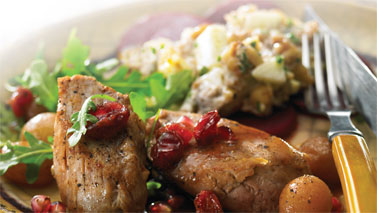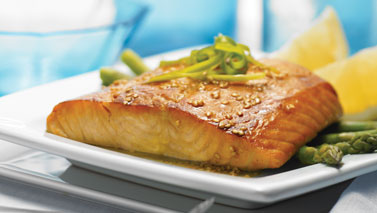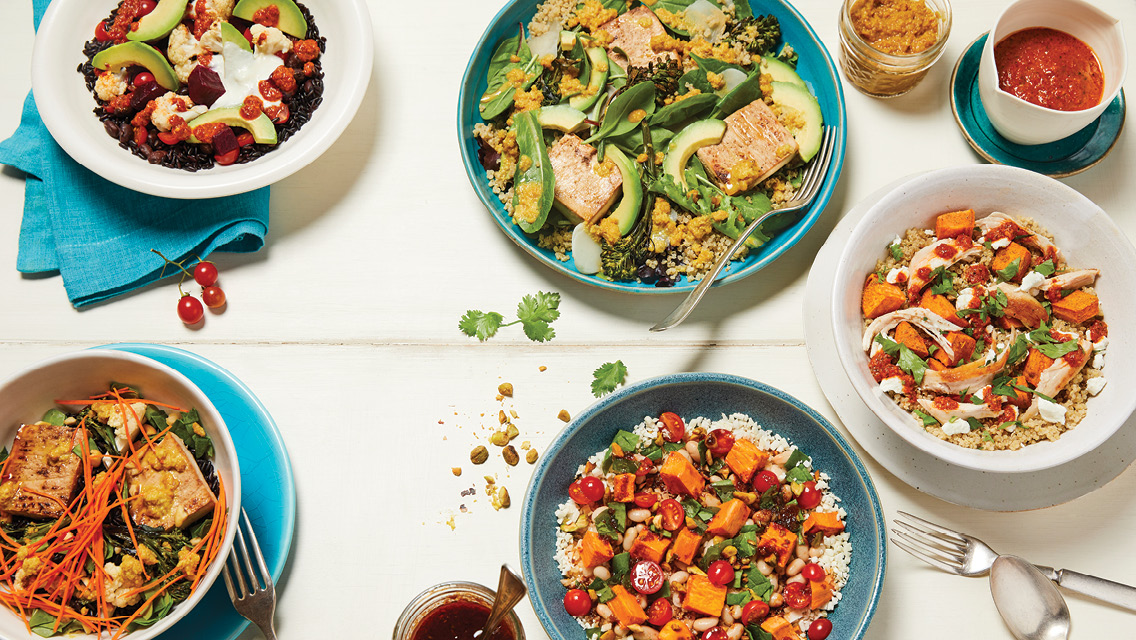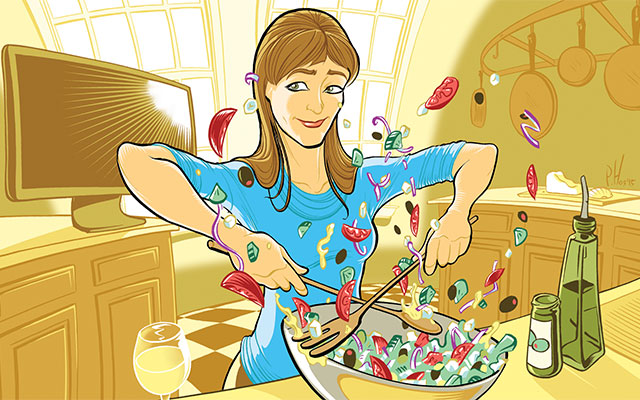I recently heard from a reader who was wondering why the world needed new recipes. It was one of those innocent questions that took me on an unexpected personal journey. My first reaction was dismissive. It’s like asking, “Why do we need new sentences — or new thoughts?” It’s inherent for human beings to create — that’s why we need new recipes. But the more I thought about it, I realized that my initial response wasn’t nearly adequate. It’s not just creativity that drives us to create new recipes:
It’s availability of ingredients in the marketplace. The cookbooks of a hundred years ago were loaded with raisin and prune recipes because they were two of the only fruits you could reliably get eight months a year.
It’s health, or rather the best current information about health. In the ’80s, for instance, Americans avoided butter based on the premise that a diet of commercial shortening would alleviate all ills (we all know how well that turned out).
It’s time. Today, there are record numbers of women in the workforce and record numbers of families with two working parents who are putting in a record number of hours. In turn, food producers and grocery stores have responded with convenience foods like prewashed baby spinach, precooked rotisserie chicken and even fresh salsa.
It’s money. Not long ago, pomegranate juice was a commodity you’d come by only in fine-dining kitchens. Once mass-production and distribution dropped the price for it, however, in rushed the recipes.
So, the combination of creativity, availability, health, time and money results in a demand for, and then a supply of, new recipes. And those new recipes are what we create in response to our ever-evolving lives.
No living chef better portrays this great human urge to create new recipes than Jacques Pépin, who has been inspiring Americans to cook for nearly 50 years. And he’s winning new fans with his most recent book, More Fast Food My Way, and his popular PBS show of the same name, both of which emphasize delicious, inventive dishes that can be created with surprising speed.
“In the beginning of my show, I always make a recipe that takes about 45 seconds,” says Pépin, 74. “Maybe I’m cutting an avocado, then I mix it with a bit of mayonnaise; perhaps there’s some cilantro and lime juice, a few shrimp or tomato. By the time I’ve finished talking, I have a little dish. People are just amazed by that; it gives them so much confidence to know that in just 45 seconds you could whip something up — for yourself or company!”
Cooking for friends, for family, and for hospitality and socializing has always been the focus of Pépin’s cooking. The French chef sees little appeal in eating alone at your desk. “I’ve been married for 43 years — my daughter is 40 now — but when she was small, I don’t remember one day when we didn’t sit down and have dinner together. It’s not necessarily pleasant all the time, to argue with the kids over this and that, but without that communication, you lead a life alone, and that’s a terrible thing.
“It’s been very interesting to see both France and America heading to a life that’s more community-minded than before,” he continues. “I remember when the French markets seemed to be dying off, and then the farmers’ markets in the United States began popping up. Then in France, they began to rediscover what they’ve always had. Now, when I go to the farmers’ market on Friday, the whole town is there. I run into friends who ask me over for lunch, and I take a simple rotisserie chicken, make a persillade sauce and serve it over greens from the market. It takes just a few minutes and you have something new and healthy for your mind and your body. You visit with your friends, you have a bit of wine, and you leave work and worry behind.”
Pépin began cooking at the age of 12, when the French were still recovering from World War II and people needed ration coupons to buy meat or sugar. He’s witnessed numerous trends come and go since then: an era of postwar plenty in which it seemed no entrée was complete without a cloak of puff-pastry; an era of margarine; an era of nouvelle cuisine; an era of Atkins madness. Today, it’s all about eating well in a hurry, and Pépin’s simple, but creative, approach to cooking has never been more in tune with the times.
Pork Medallions With Grapes in Pomegranate Sauce
Makes four servings
- 1 large pork tenderloin (about 11/4 pounds)
- 1 tbs. unsalted butter
- 1 tbs. good olive oil
- 3/4 tsp. salt
- 3/4 tsp. freshly ground black pepper
- 1/2 cup pomegranate juice
- 1/2 cup chicken stock (homemade or low-salt prepared chicken broth)
- 2 tbs. ketchup
- 1 cup small, green seedless grapes
- 3 tbs. dried cherries or cranberries (unsweetened)
- 1/4 cup shredded arugula
Directions
- Trim the pork tenderloin of most of the fat and silverskin and cut it crosswise into 1-inch-thick medallions. Preheat the oven to its lowest setting. Heat the butter and olive oil in a large, heavy skillet. Sprinkle the medallions with the salt and pepper.
- Arrange the medallions in a single layer in the skillet and cook them over high heat for about two-and-a-half minutes on each side, or until lightly pink inside. Transfer the medallions to a plate and place in oven.
- Add the pomegranate juice and chicken stock to the skillet, bring to a boil, reduce the heat to low, cover, and cook for four to five minutes. Add the ketchup, grapes, and cherries or cranberries, and mix well. Boil for about one minute, or until the sauce is smooth and slightly thickened.
- Arrange the medallions on four warm plates, coat with the sauce and grapes, and sprinkle with the shredded arugula (you can use chopped chives or parsley instead, if you like). Serve.
Beet, Stilton, Apple and Nut Salad
Makes four servings
- 1 1-pound can sliced beets
- 3/4 cup coarsely chopped white mushrooms
- 1 cup peeled and coarsely chopped apple
- 1/2 cup broken walnut pieces
- 1/2 cup crumbled Stilton cheese
- 3 tbs. mayonnaise
- Salt
- Freshly ground black pepper
- 1 tsp. chopped fresh chives
Directions
- Drain the juice from the can of beets. Divide the slices among four plates, allotting four or five slices per plate.
- Mix together in a bowl the mushrooms, apple, walnut pieces and Stilton cheese.
- Add the mayonnaise and salt and freshly ground black pepper to taste, and mix well.
- Spoon a good dollop of the mixture into the middle of the sliced beets and sprinkle with the chives. Serve.
This article originally appeared as “Fast Food Your Way.”




This Post Has 0 Comments